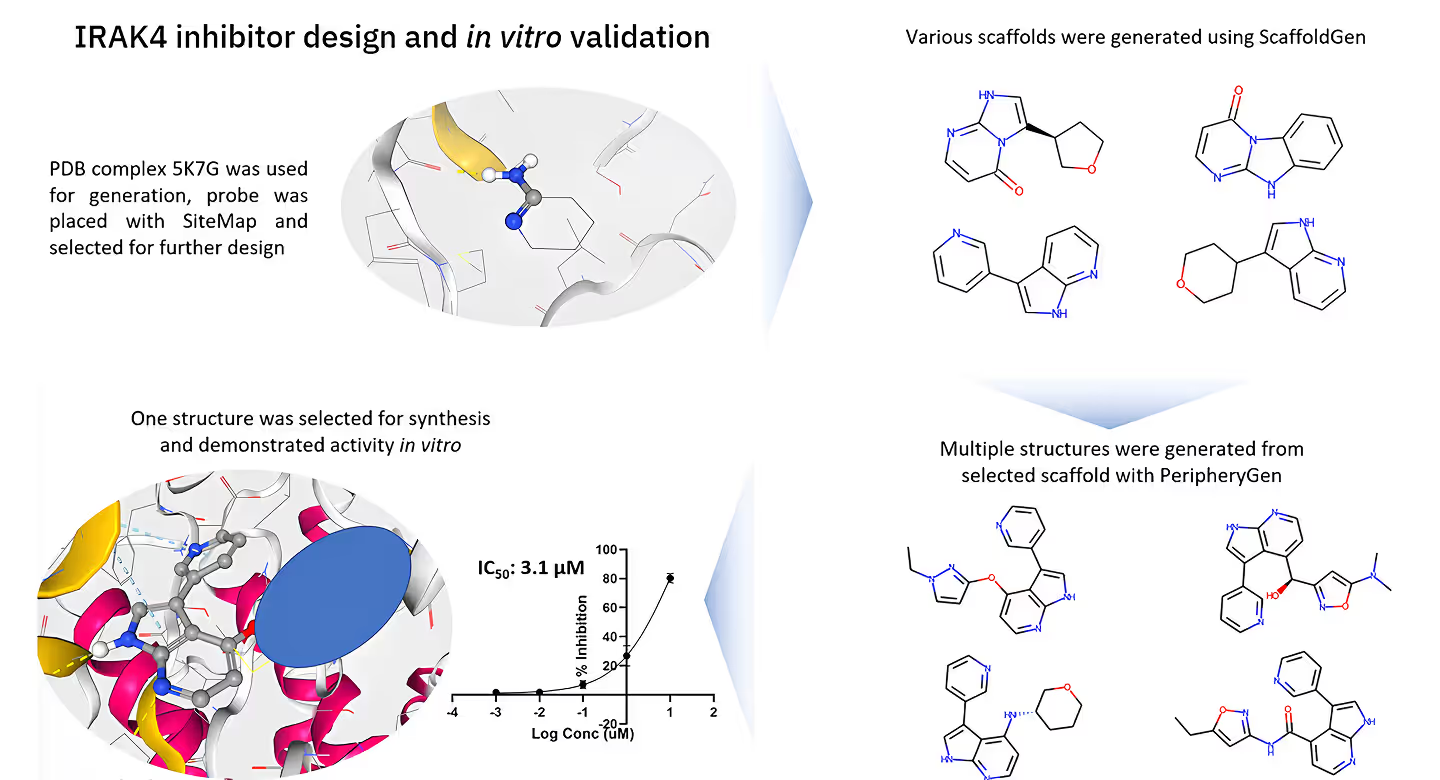Background
In our ongoing efforts to leverage AI for drug discovery, we recently conducted an experiment on our online AI-driven drug design platform to identify potential inhibitors for IRAK4. This study yielded promising results and provided valuable insights into the structure-based drug design (SBDD) workflow.
Objective
The primary goal of this study was to generate novel molecular structures with the potential to inhibit IRAK4, utilizing a hybrid AI and rule-based approach to optimize molecular design.
Methodology
Model Preparation:- • We selected the known ligand-protein complex of IRAK4 with an inhibitor (PDB ID 5K7G) as the structural basis for our study.
- • The SiteMap module was used to position an aminopyridine fragment within the binding site, defining the starting point for scaffold exploration.
Scaffold Generation:- • Using the Scaffold Generation module, we generated a diverse set of core structures.
- • Among these, an azaindole-based hinge binder was selected due to its favorable binding characteristics.
Molecular Expansion:- • The Periphery Generation module facilitated scaffold growing, leading to multiple candidate structures.
- • Medicinal chemistry expertise guided the selection of the most promising scaffold for synthesis.
Experimental Validation:- • The chosen compound was synthesized and subsequently tested in vitro.
- • The results demonstrated moderate activity in the low-micromolar range, indicating its potential as a viable hit for further optimization.
Results
The successful identification of a promising IRAK4 inhibitor highlights the effectiveness of our AI-assisted drug design approach. This experiment demonstrates how a combination of structure-based modeling, scaffold generation, and medicinal chemistry expertise can accelerate hit identification and optimization.
Next steps
Further Biological Evaluation:Refinement of the identified compound to enhance potency and selectivity.
Lead Optimization:Additional in vitro and in vivo testing to assess pharmacokinetic properties.
Model Enhancements:Integration of additional AI-driven validation tools to improve prediction accuracy.
This case study showcases the potential of AI in early-stage drug discovery, streamlining the identification of viable candidates for further development.
SBDDDrugDesignIRAK4MedicinalChemistry

